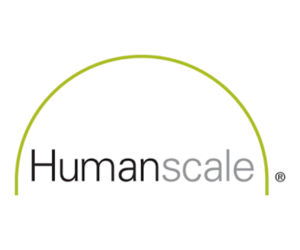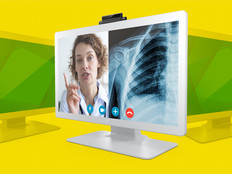DISCOVER: Improve the health and comfort of clinical staff with ergonomic products from Humanscale.
HEALTHTECH: What are some common injuries resulting from heavy use of healthcare IT tools?
Hand and wrist issues are common as a result of the extra typing and mousing. Injuries such as carpal tunnel syndrome, tendonitis and tenosynovitis are caused by repetitive motion. Then there’s localized discomfort as a result of muscle fatigue in areas like the neck and shoulder and the upper or lower back.
Chronic neck pain, or “text neck,” is on the rise as a result of poor neck postures associated with increased mobile phone and tablet usage. In some instances, symptoms are severe and can include cervical nerve damage.
HEALTHTECH: Are there specific types of hardware or software fueling this increase?
Different EMR solutions introduce different levels of mouse-clicking and repetitive key strokes. Some systems require more than twice the amount of repetitive motion. The cumulative effect could mean the difference between developing an injury or not.
There are also some less obvious implications: Imagine interacting with a nurse or a doctor dealing with chronic pain. That could easily affect the caregiver’s interaction with the patient and the overall experience. There is also some evidence that caregivers who are injured or are experiencing pain are more likely to commit errors.
HEALTHTECH: How can organizations help clinicians avoid these types of injuries?
Anything that can be done to reduce exposure would be a benefit. That could mean shortening the length of the shift, rotating exposure or physically limiting the extent of the risk factors through equipment.
But it’s not just giving people the proper tools; it’s also providing caregivers with enhanced awareness of the risks and information on how to configure their workstations appropriately to their bodies. At nursing stations, you can take steps such as giving users control over their monitor angle, height and distance relative to the user.
Tools such as articulating keyboard supports have been shown to dramatically improve hand and wrist posture by reducing wrist extension — a postural risk factor linked to carpal tunnel syndrome and tendonitis — and eliminating contact stress (compression at the wrist crease).
READ MORE: Make smart speakers part of your care strategy.
HEALTHTECH: What should organizations look for in workstations and office equipment?
Organizations need to consider whether the measures they take are realistic given the environment. For instance, let’s say you have five nurses sharing multiple workstations on wheels. If you provide tools that require several steps and multiple minutes to adjust, the likelihood that anyone will make the adjustments is almost zero.
Autofit technology in our line of point-of-care carts only asks for two bits of information — your height, and whether you prefer to sit or stand. Based on that information, the carts can automatically adjust in seconds to a user’s dimensions.
For wall-mounted point-of-care technology devices, which include a track bolted to the wall that supports a monitor and keyboard to bring technology into a patient room, the same rules apply: the easier the adjustments, the more likely they are to be adjusted. A lot of our products are on counterbalance mechanisms, which allow for the adjustment of the monitor and the keyboard with no knobs or levers associated.
HEALTHTECH: How can related health risks be reduced or eliminated?
User feedback on software applications is important for hospital administration. When an IT group considers an EMR system, do the nurses and doctors have a seat at the table for that decision?
Another area where input is very important is in the design of patient rooms. If you ask doctors and nurses, they would say that technology should be positioned such that they can make eye contact with the patient while interfacing with the technology.
This concept is often referred to as the “triangle of care,” with one point representing the caregiver, another representing the patient and the final one representing the technology. Communication between the caregiver and patient is optimized when the computer is aligned with the caregiver and the caregiver is aligned with the patient.
Brought to you by:











